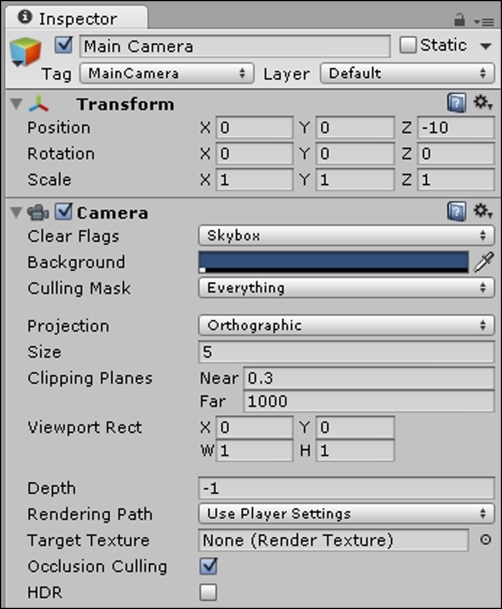With the new 2D features of Unity, the 2D camera is already set. This makes it easier to set up our scene as we need only worry about positioning the background and foreground elements and layering them.
We will go through the camera settings to understand them. When we click on the Main Camera option in our scene, we get the following settings within the Inspector tab as shown in the following screenshot:

The following are the parameters of the Main Camera option:
Clear Flags: This sets which parts of the screen are to be cleared.
Background: This selects which color to display behind all the objects in our scene if we have not added a skybox, background, or image that takes up the whole screen.
Culling Mask: This selects which layers are to be rendered by the camera.
Projection: We select Perspective if we want to work in 3D and Orthographic to set our camera mode to 2D.
Size: This is the size of the camera in Orthographic (2D) mode.
Clipping Planes...



